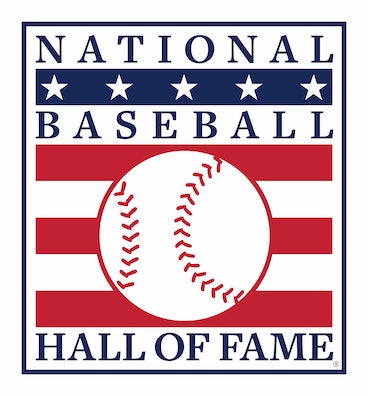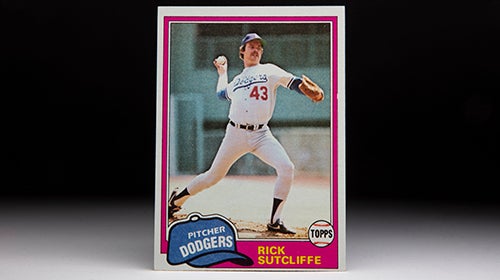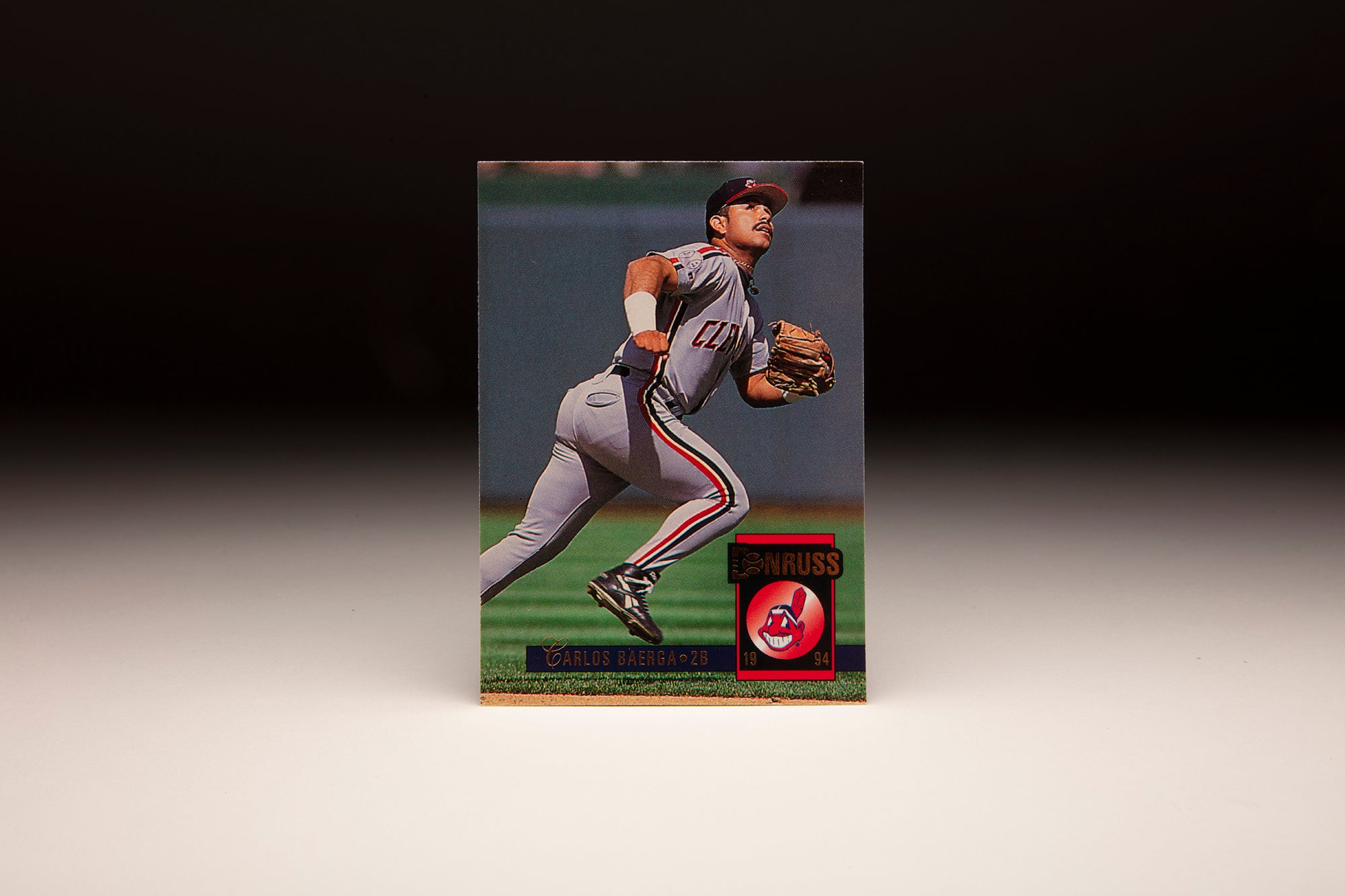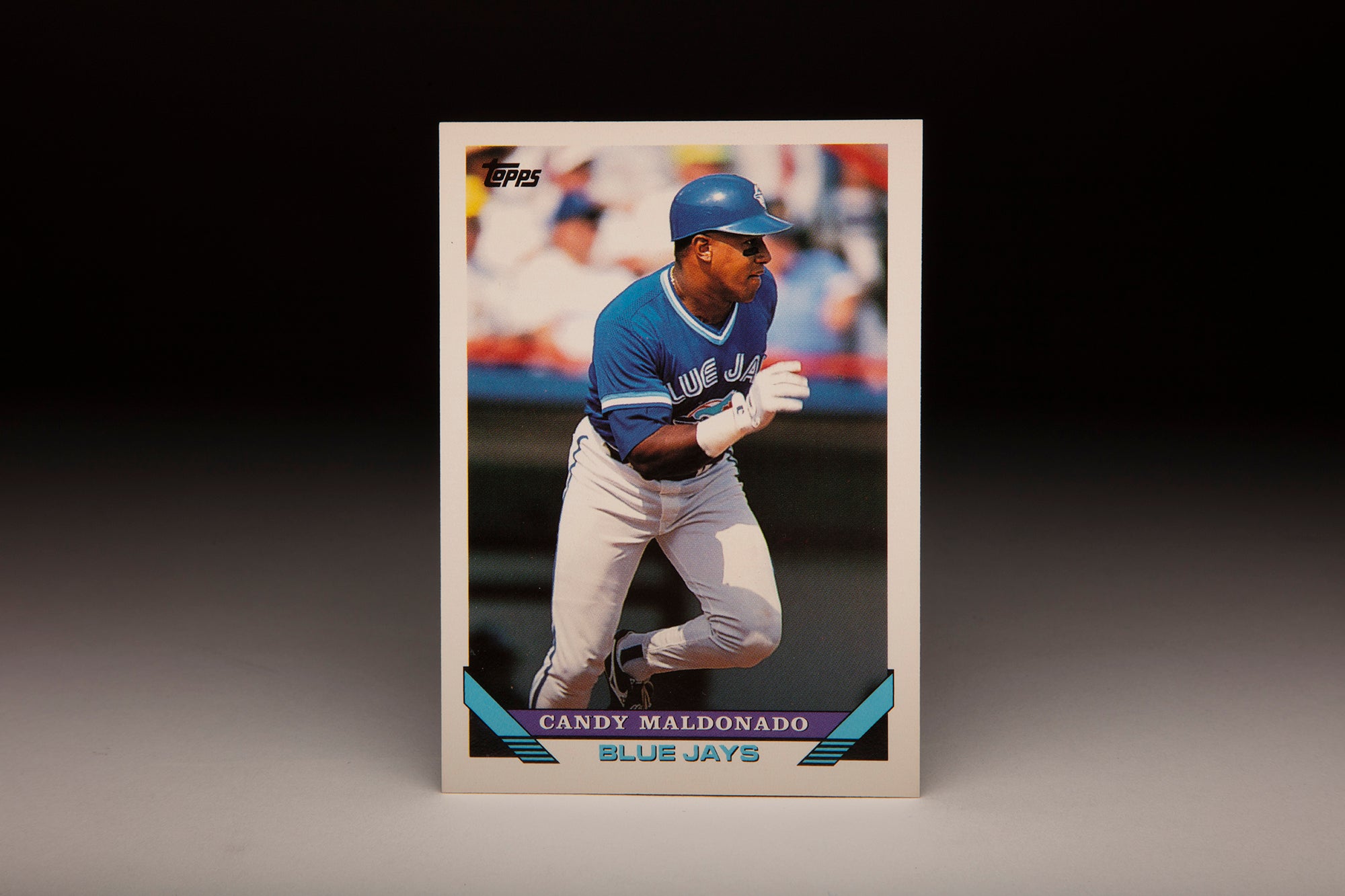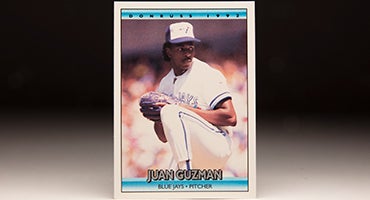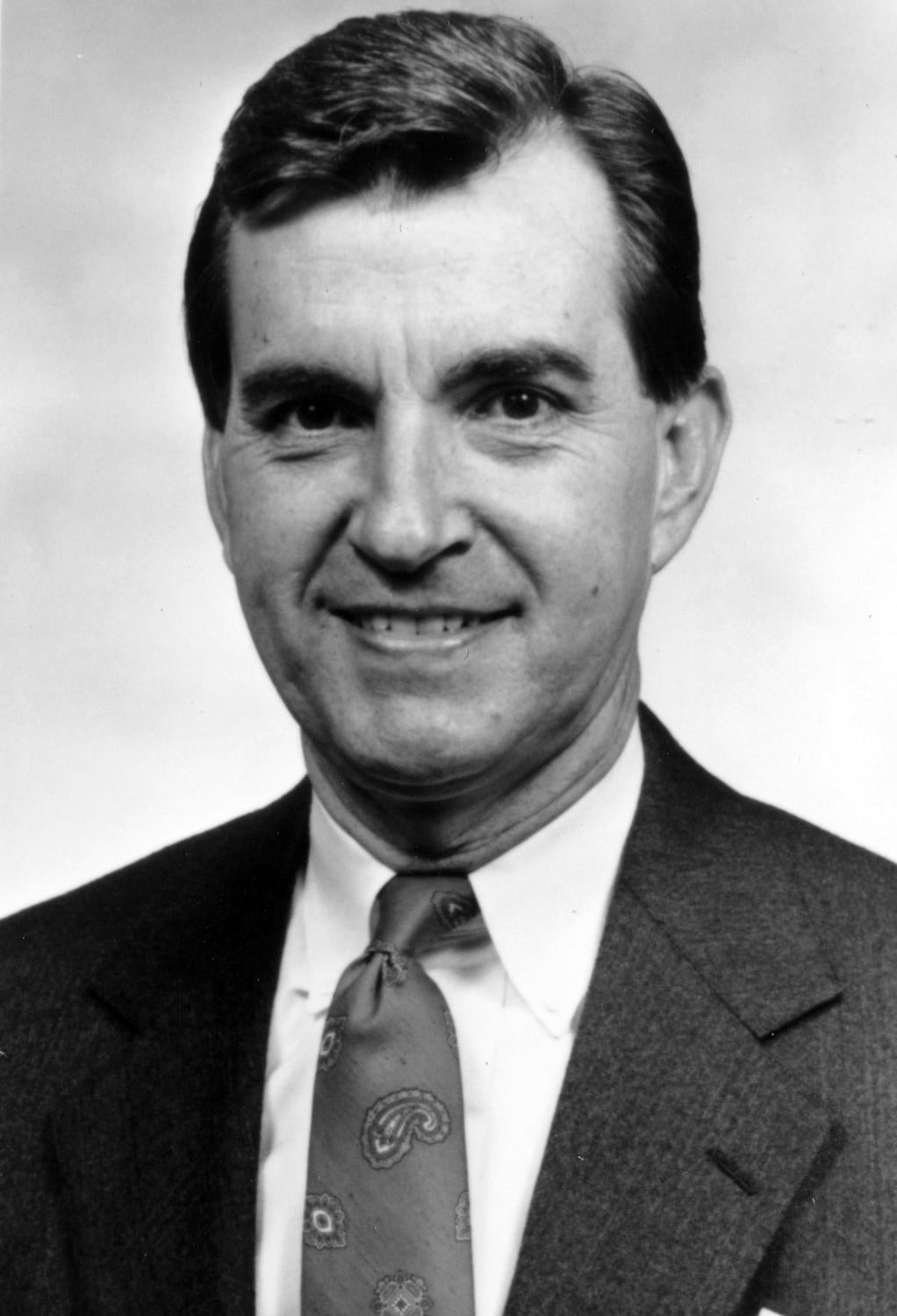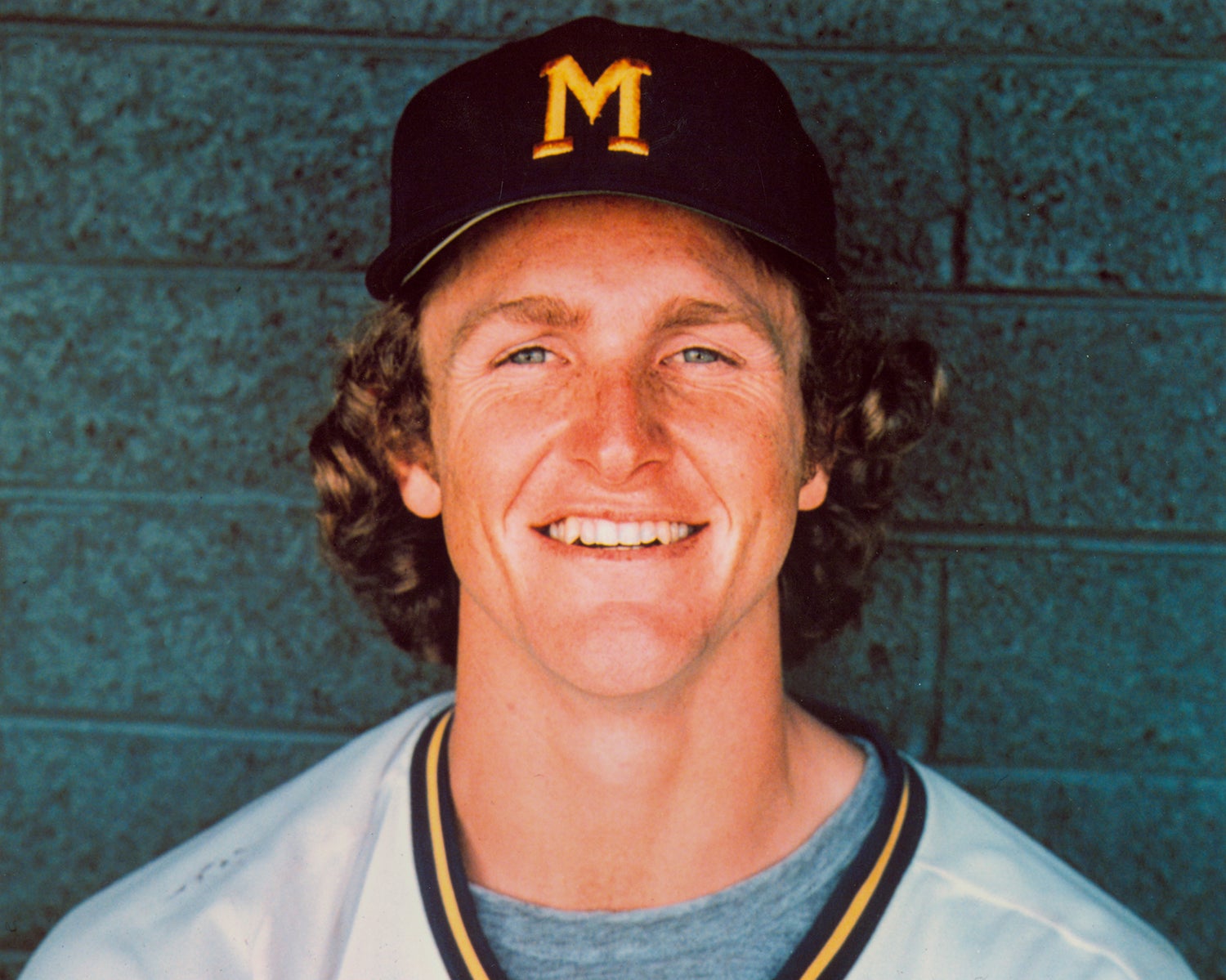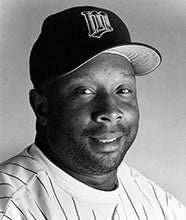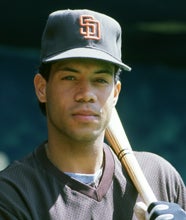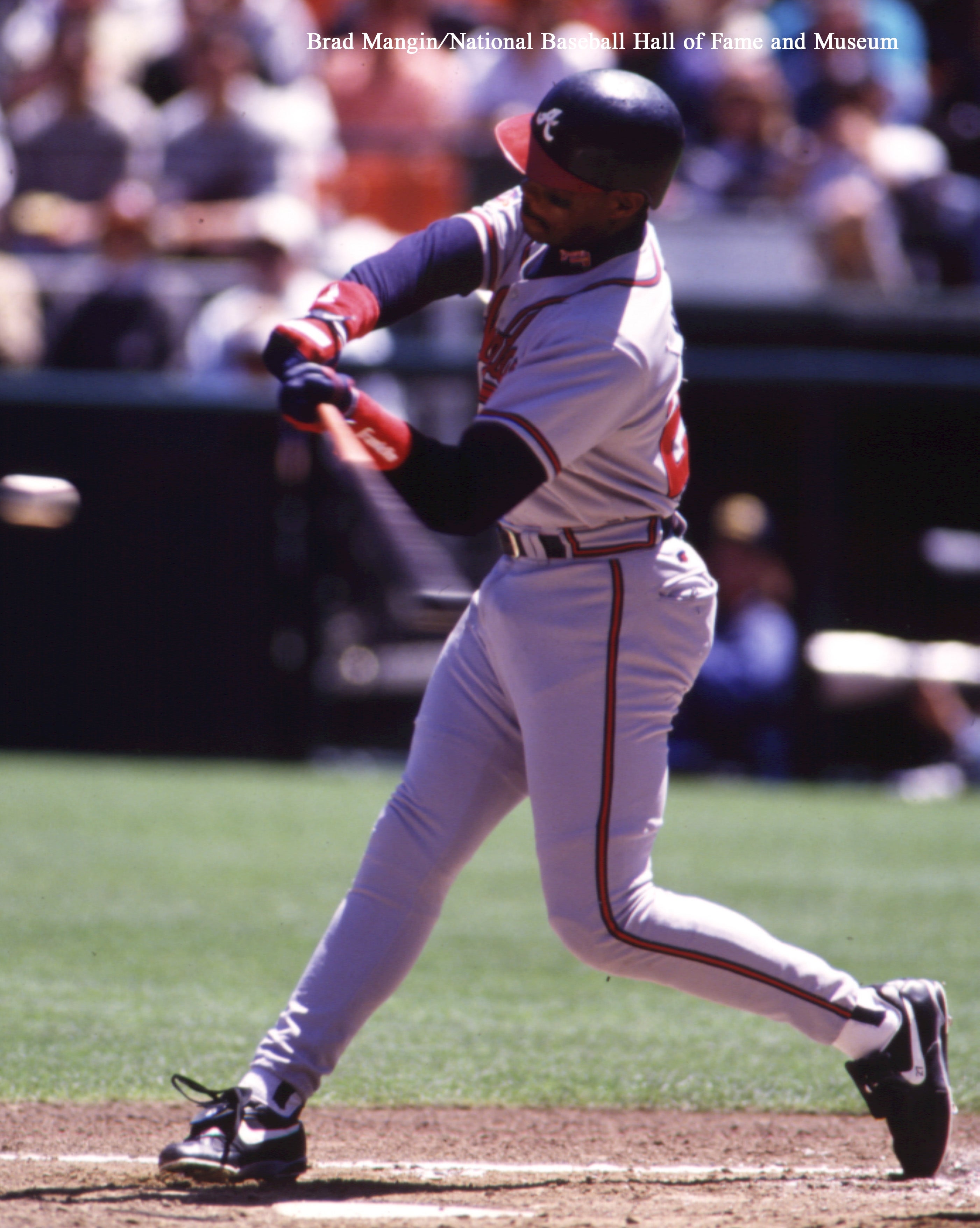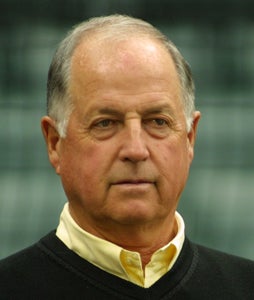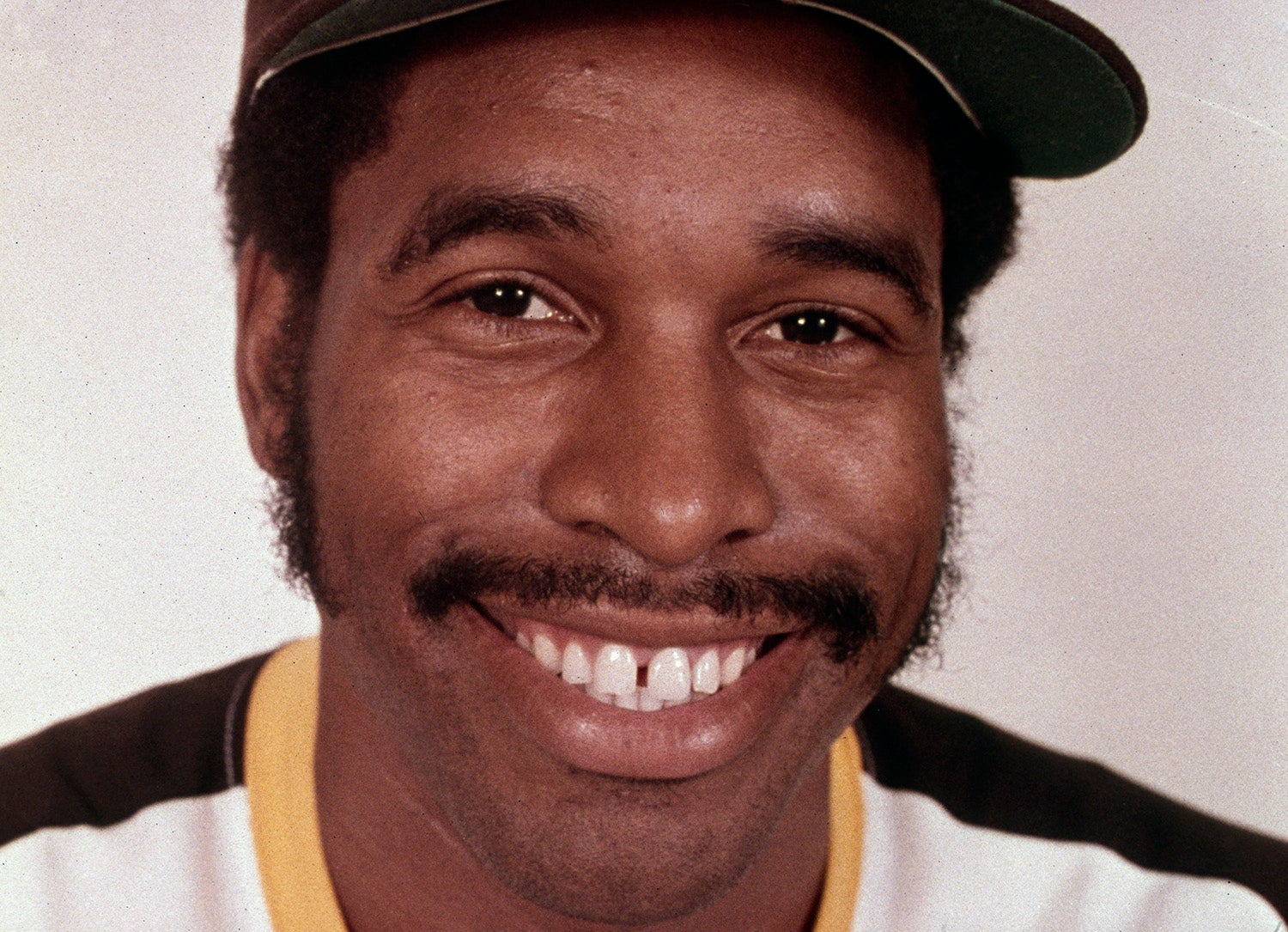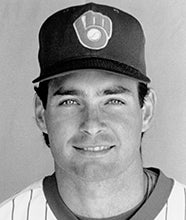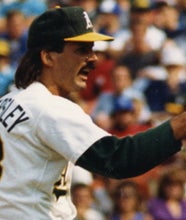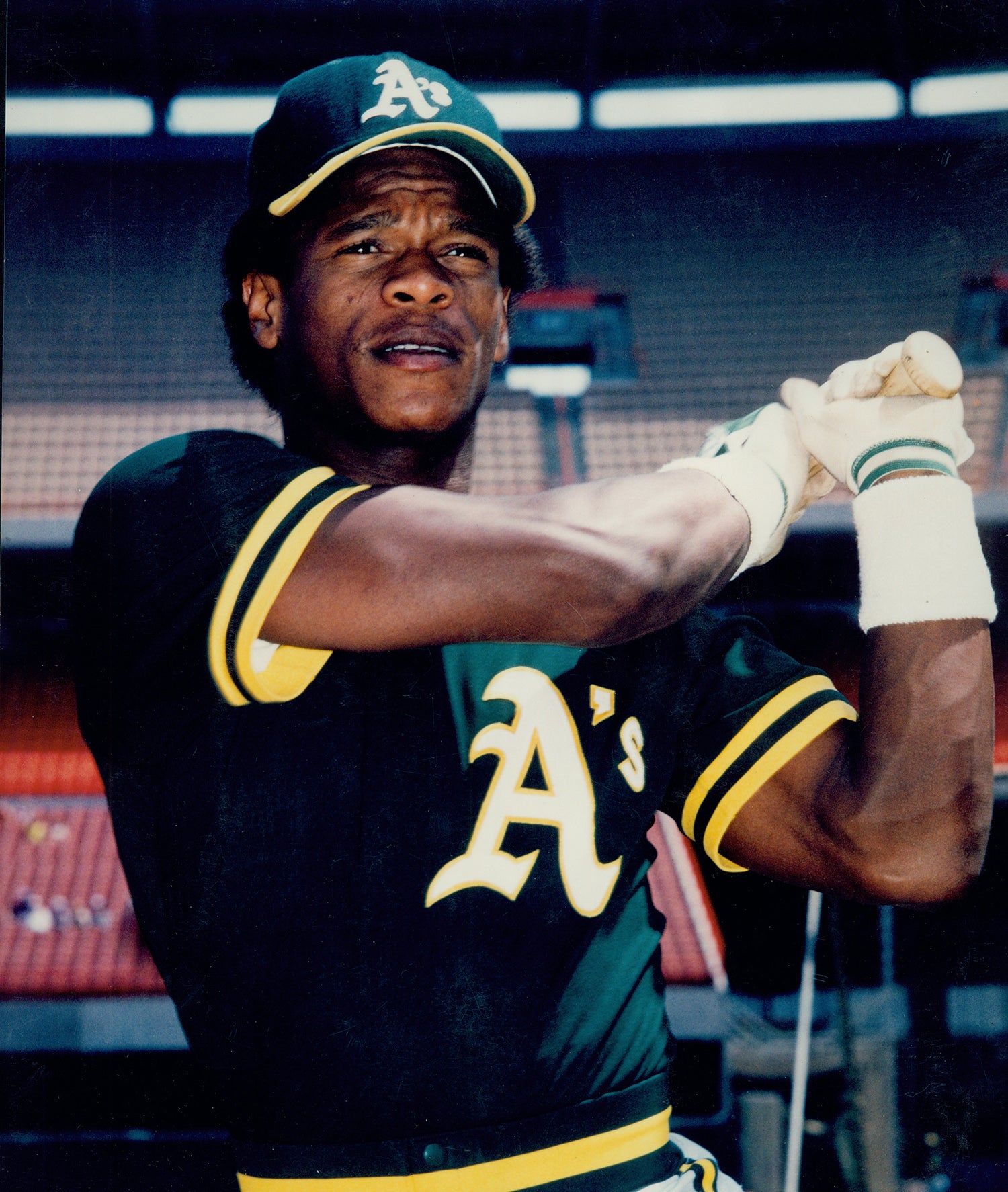- Home
- Our Stories
- #CardCorner: 1989 Topps Joe Carter
#CardCorner: 1989 Topps Joe Carter
Eighteen players in big league history have compiled a career where they drove in at least 100 runs in 10 seasons.
The list of players who have exactly 10 of those campaigns includes legends like Stan Musial, Vladimir Guerrero, David Ortiz, Willie Mays – and the outfielder who brought the Toronto Blue Jays their second World Series title, Joe Carter.
Carter will always be remembered for his Game 6 walk-off home run in the 1993 Fall Classic. But Carter’s career consisted of 401 other home runs (including the postseason) and the enduring reputation as one of his era’s best run producers.
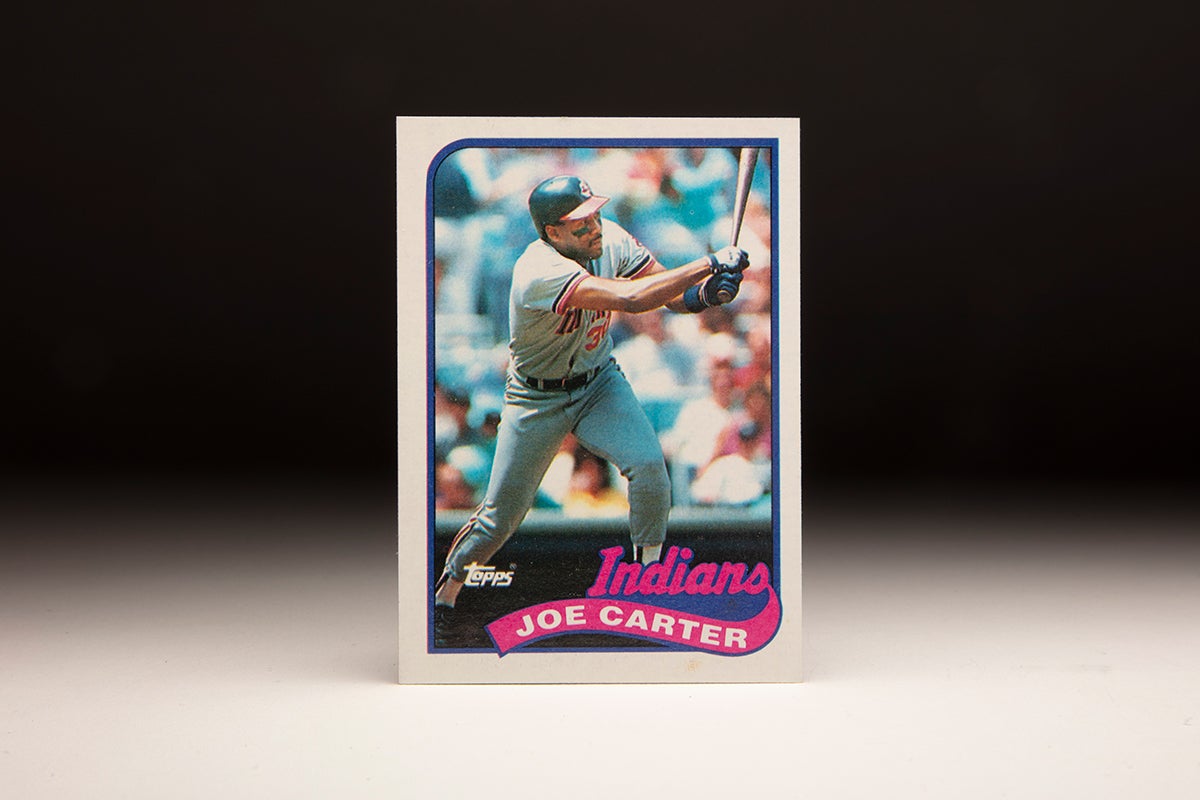
Joseph Chris Carter was born March 7, 1960, in Oklahoma City. He was a three-sport star for Millwood High School in his hometown – and even earned all-state honors in track as a senior after being coaxed onto the team late in the season. He quickly set a school record in the long jump.
It was the only all-state honor of his high school career.
“Growing up here in high school, not making the all-state teams, that’s been my whole life,” the Daily Oklahoman quoted Carter as saying during an event honoring him following the 1992 World Series. “I’ve grown kind of used to it, so I don’t expect a lot of those things and don’t become disappointed.”
Carter was not selected in the MLB Draft after graduating from high school but instead enrolled at Wichita State University with the intention of playing football (he was a quarterback in high school) and baseball. But after hitting .450 as a freshman, Carter abandoned his career as a tight end – where he had transitioned in college – and concentrated on baseball.
Carter hit .432 as a sophomore in 1980 and then followed that with a monster season in 1981, hitting .411 with 24 homers and an NCAA-record 120 RBI. A three-time All-American, Carter had totaled 58 home runs and 312 RBI over three seasons when the Cubs made him the second overall pick in the June 1981 MLB Draft.
“There aren’t too many things we don’t like about Joe,” Cubs assistant general manager John Cox told the Wichita Eagle. “In our opinion, this was an easy choice. He can play any position in the outfield.”
Carter believed the Cubs, who were in a rebuilding phase, were a good fit for his skillset.
“If they make me the right offer,” Carter told the Eagle, “there’s no use hanging around here.”
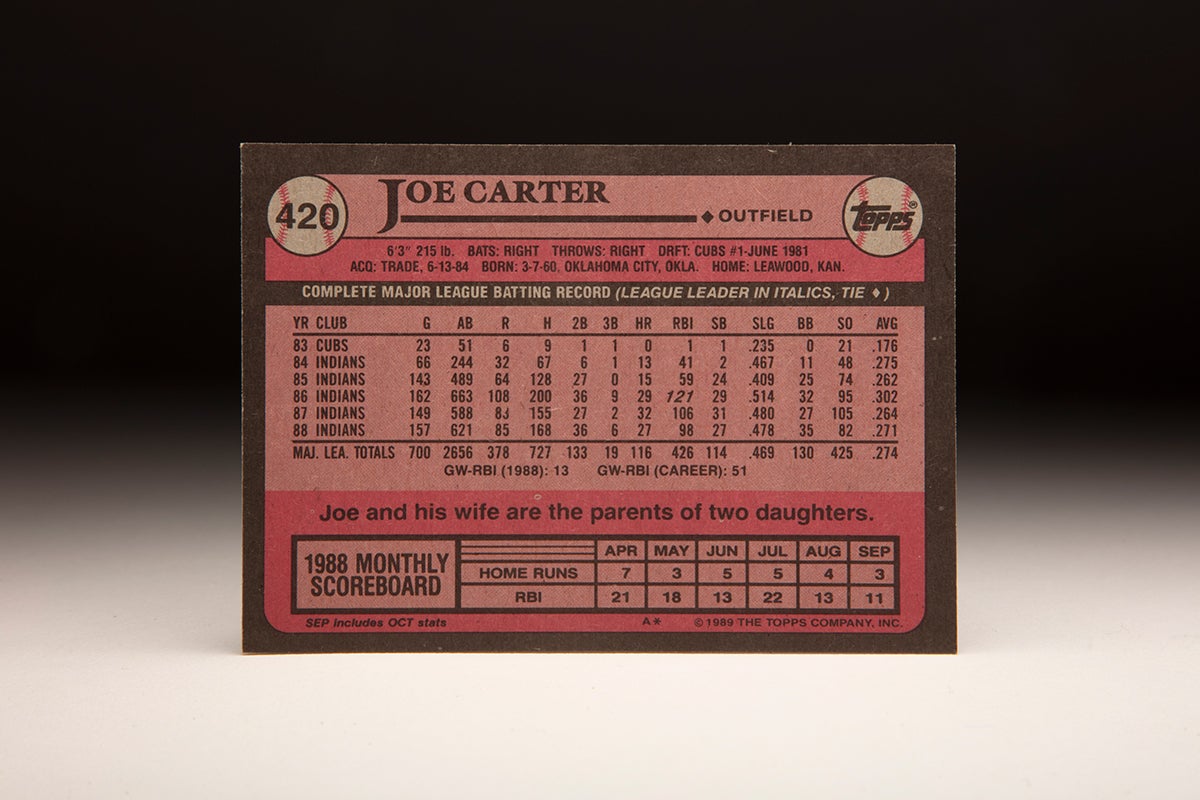
The Cubs and Carter came to an agreement just four days after the draft on June 12, and Carter was immediately sent to Midland of the Double-A Texas League. He batted .269 with 42 runs scored, five homers and 35 RBI in 67 games, then returned to Midland in 1982 and set the league on fire by hitting .319 with 25 homers and 98 RBI in 110 games. He was named the designated hitter on the Texas League All-Star team.
Carter started the 1983 season at Triple-A Iowa and earned American Association Player of the Month honors in June when he hit .376. The Cubs called him up to the big leagues in July, and Carter hit just .176 with no walks and 21 strikeouts in 23 games for Chicago while bouncing between Chicago and Iowa the rest of the year. But he was still regarded as one of the top prospects in the game.
Carter began the 1984 season back at Iowa and was blistering Triple-A pitching with 14 homers and 67 RBI through 61 games. But with the Cubs off to a surprisingly fast start, general manager Dallas Green went all-in to secure the team’s first postseason berth in 39 years. He acquired pitcher Rick Sutcliffe, catcher Ron Hassey and reliever George Frazier from Cleveland in exchange for Carter, outfielder Mel Hall, pitcher Don Schulze and a minor leaguer.
“There was a lot of doubt in the Cubs organization and I didn’t feel it was fair,” Carter told the Arizona Daily Star in 1985. “They were judging me on two weeks in the big leagues (at the end of the 1983 season). “They were writing me up as a Triple-A player. I wanted to prove a few people wrong.”
Sutcliffe would go 16-1 with the Cubs in 20 starts, leading Chicago to the NL East title. Meanwhile, Carter would fulfill his promise in Cleveland.
“(The Cubs) had to go to their farm system to get Sutcliffe,” Royals general manager and future Hall of Famer John Schuerholz told the Springfield (Mo.) Leader and Press following the 1984 season. “They gave up youth for the veteran and it succeeded.”
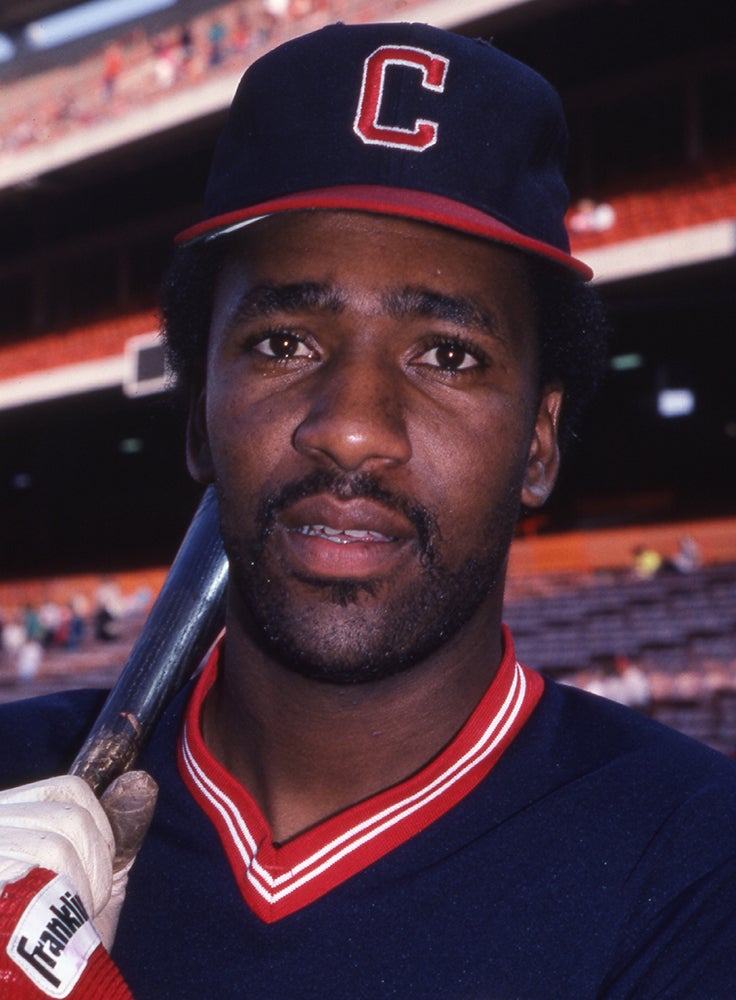
But Carter would provide Cleveland with a potent bat for years to come. Cleveland immediately put him into the lineup in left field and he hit .275 with 13 homers and 41 RBI in 66 games – leaving him with 27 homers and 108 RBI in 127 games between Iowa and Cleveland.
“At first, there was a little pressure when you’re traded for a guy like Sutcliffe,” Carter told the Arizona Daily Star. “But when you think about it, Sutcliffe (who would become a free agent after the 1984 season) said he wasn’t coming back to Cleveland anyway. So instead of getting one man in compensation for him, the Indians got three young guys to provide for the future.
“I don’t try to compare myself to Sutcliffe. He’s a pitcher. You can’t compare the two.”
Carter was Cleveland’s Opening Day designated hitter in 1985 and played left field for most of the season, hitting .262 with 15 homers, 59 RBI and 24 steals. Then in 1986, Carter became one of the game’s best hitters – batting .302 with 29 home runs, 200 hits, 108 runs scored, 29 steals and an MLB-leading 121 RBI. His 341 total bases ranked third in the American League and helped him finish ninth in the AL Most Valuable Player Award voting.
Carter entered the 1987 season 27 days short of qualifying for arbitration. When Cleveland offered him a one-year deal worth $250,000, Carter balked and left Spring Training for five days in protest.
“There’s always going to be a bitter taste in my mouth,” Carter told USA Today just before the start of the 1987 campaign. “But I put it behind me. Now is the time to play baseball.”
But Carter’s contract status with Cleveland would be an ongoing issue throughout the next three seasons.
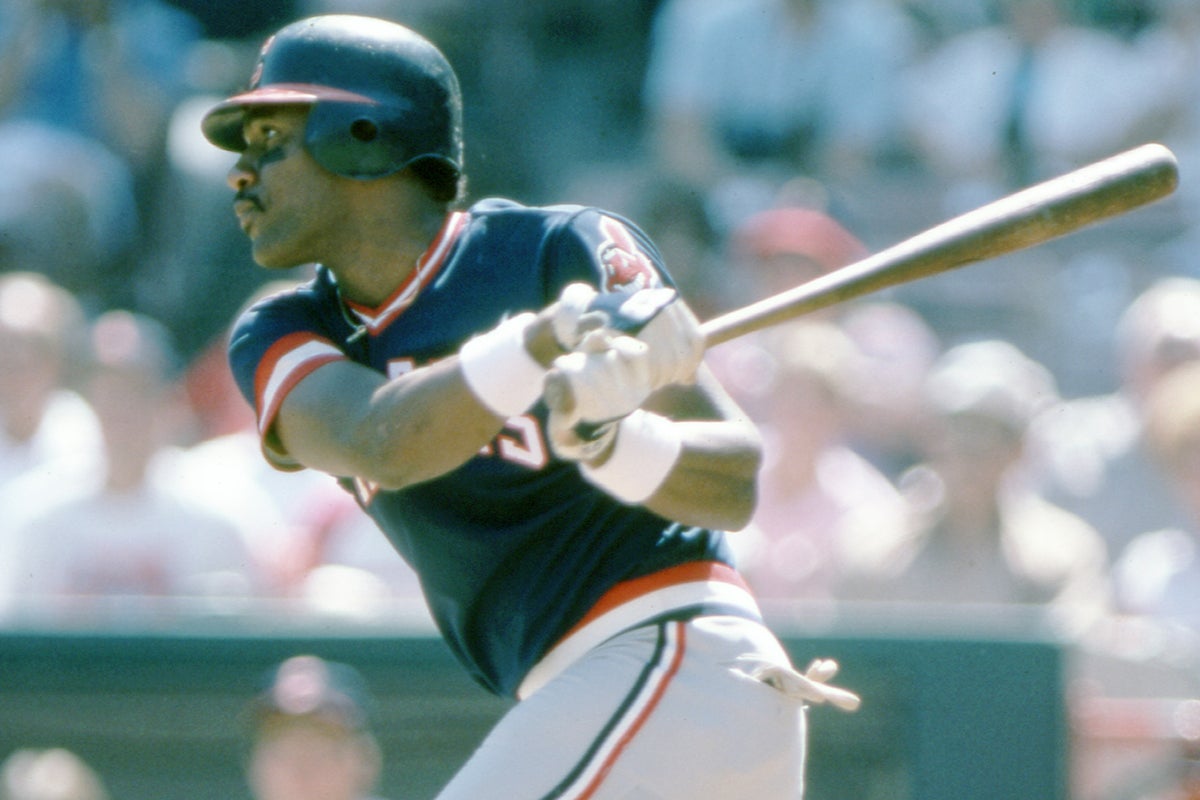
His overall numbers dropped in 1987 but Carter still hit .264 with 32 homers, 106 RBI and 31 steals – becoming the first player in Cleveland history and just the ninth MLB player overall to join the 30/30 club. Now eligible for arbitration, Carter asked for $925,000 and the Indians countered with an offer of $750,000 before the two sides agreed to a contract worth $840,000.
“If I was still bitter about last year, I would have gone to arbitration,” Carter told the Cleveland Plain Dealer. “But you could just tell the difference (with new team president Hank Peters running the Indians) by the offer the Indians made this year.
“I wasn’t seeking revenge. I just wanted to be treated fairly.”
The Indians moved Carter to center field in 1988 and he hit .271 with 27 homers, 27 steals and 98 RBI. His 443 putouts in center were good for a second-place tie with Robin Yount among AL center fielders and ranked behind only Gold Glove Award-winner Kirby Puckett.
But when negotiations began for his 1989 contract, Carter found himself at odds with the franchise again. Carter asked for $1.63 million and Cleveland countered with $1.15 million, the biggest gap ($480,000) of any case that went before an arbitrator.
Carter won the case after turning down an offer from the team that guaranteed him $5 million over three years.
“Joe Carter likes Cleveland and wants to stay there,” Carter’s agent, Jim Turner, told the Associated Press. “We can talk about a multiyear deal next season.”
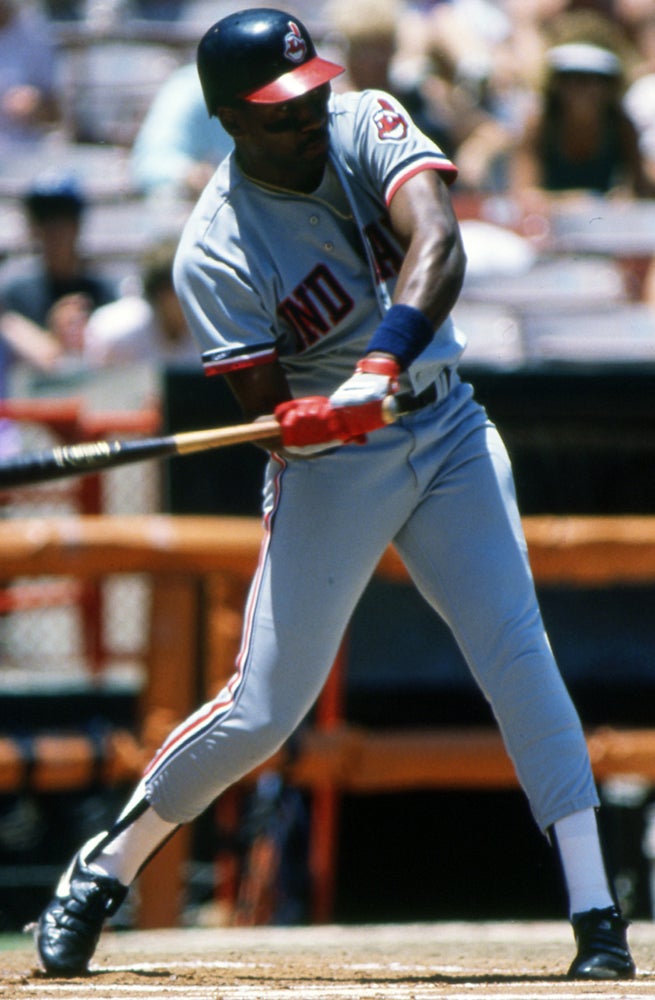
But soon after the 1989 season ended – a year in which Carter hit .243 with 35 homers and 105 RBI – it became clear that Carter’s days in Cleveland were numbered. The team announced on Nov. 2, 1989, that contract talks with Carter had ended.
“I don’t want to sign a long-term deal before (free agency),” Carter told reporters. “I wanted to see what it’s like on the free agent market.”
A little more than a month later, Cleveland traded Carter to the Padres in exchange for Sandy Alomar Jr., Carlos Baerga and Chris James. It would be a deal that would shape the Indians’ future – and put Carter on a path that eventually led to Toronto.
Carter flexed his muscles during the deal, forcing Peters to negotiate only with teams that were his preferred destinations. Otherwise, Carter announced he would simply play for one year for his new team and become a free agent. Peters quickly identified the Padres as the best trade partner but had to endure a protracted negotiation to get San Diego general manager Jack McKeon to agree to include Baerga in the deal.
Meanwhile, several other teams made offers for Carter – including the Cardinals dangling Vince Coleman and Willie McGee and the Giants suggesting Kevin Mitchell. But eventually, McKeon agreed to include Baerga.
“When the owners have you by the horns, they use the system,” Carter told the Plain Dealer. “I waited a long time to use the system. That’s business. That’s the way you should do it.”
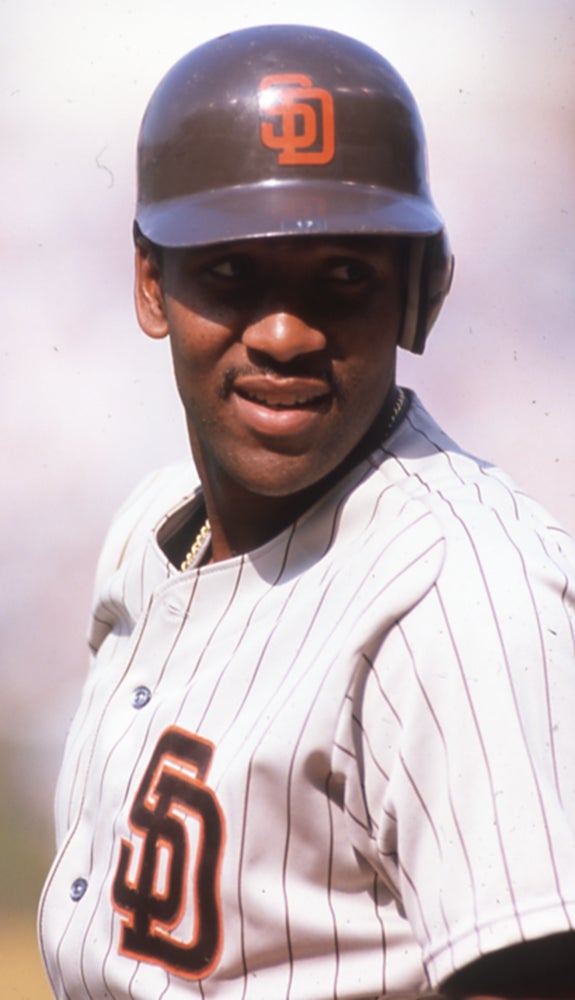
As soon as the deal was finalized, Carter and the Padres began negotiating and quickly agreed to a three-year contract worth $9.2 million that included provisions that Carter could not be traded to either the Mets or Yankees in the first year of the deal.
“I wasn’t going to hold up the deal for (Baerga),” McKeon told the Plain Dealer. “I didn’t want to see Joe Carter hitting 35 homers for somebody else while this kid would be a year or two from fitting into our plans.”
Carter would hit 24 home runs for San Diego in 1990 to go along with 22 steals and 115 RBI. But he batted just .232 and struggled defensively in center, measuring out at a minus-3.1 defensive WAR that still ranks among the lowest single-season totals in the game’s history.
The Padres finished with a 75-87 record, and on Dec. 5, 1990 – one day shy of the anniversary of his trade to San Diego – Carter and Roberto Alomar were traded to the Blue Jays in exchange for Tony Fernández and Fred McGriff. It was a blockbuster deal executed by Toronto general manager Pat Gillick – who was known as “Stand Pat” for his reluctance to trade his young stars – and Joe McIlvaine, who had just replaced McKeon as Padres’ GM.
“Stand Pat, huh?” Gillick’s assistant Gord Ash told the Toronto Star. “Pat’s got a label he doesn’t deserve. He makes deals when it makes sense.”
The deal for Carter set the stage for the greatest baseball moment in Toronto history.
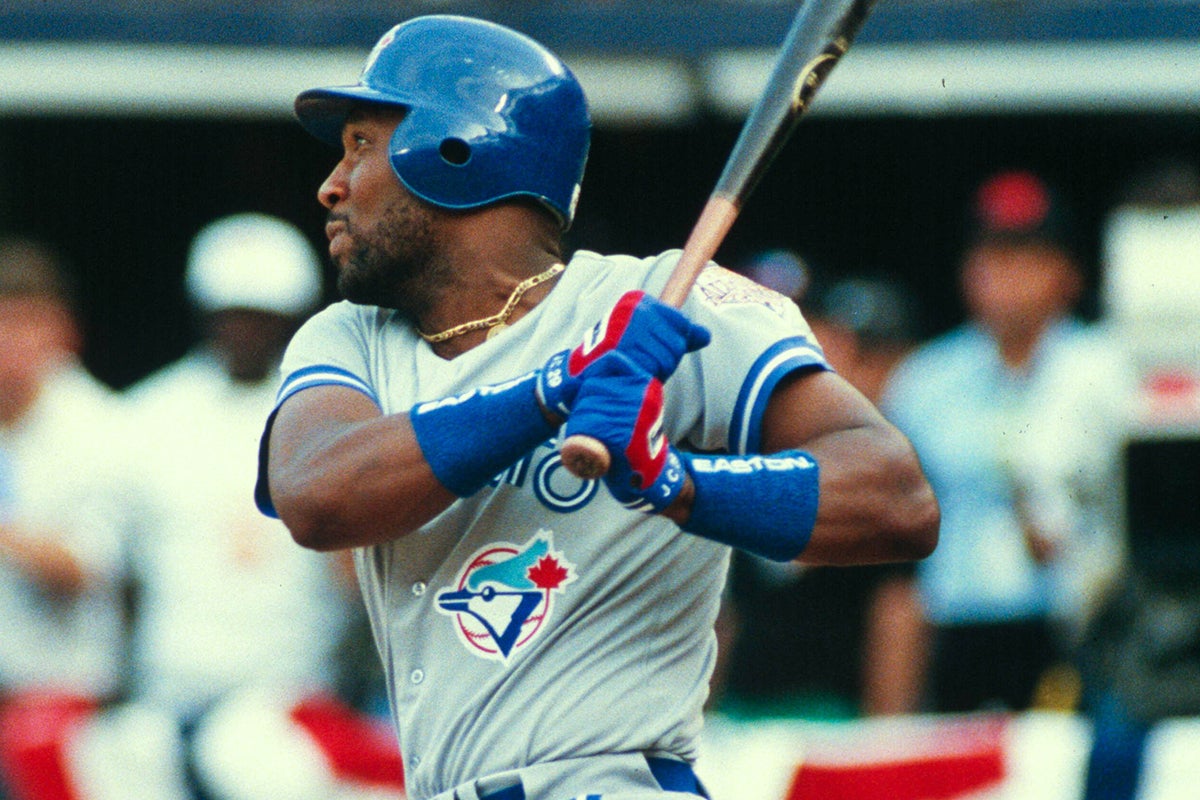
The Blue Jays made Carter their Opening Day right fielder and cleanup hitter in 1991. He would play right field for much of the year and finished the season hitting in the No. 3 hole as Toronto won the AL East to send Carter to the postseason for the first time. He also earned his first All-Star Game selection that year, hitting .273 with 33 homers, 108 RBI and 20 steals while appearing in 162 games for the third straight season. He hit .263 with a home run and four RBI in Toronto’s five-game loss to Minnesota in the ALCS before winning his first Silver Slugger Award and finishing fifth in the AL Most Valuable Player Award balloting.
And though Toronto once again came up shy of the World Series, the pieces were in place for a historic championship run.
“We’re looking for one thing – and that’s to come home with the world championship,” Carter told the Toronto Star as Spring Training was winding down in 1992. “There’s no ifs, ands, buts or ors. That’s our goal.”
Carter began the season with a consecutive-games-played streak of 505, second only to Cal Ripken Jr. among active players. He took four games off in 1992 but it hardly mattered as he hit .264 with 34 homers and 119 RBI as Toronto won 96 games and repeated as AL East champions. This time, the Blue Jays finally captured the AL pennant – with Carter’s first-inning, two-run homer off Oakland’s Mike Moore putting Toronto in front to stay in a 9-2 victory that clinched the flag.
In a hard-fought World Series against the Braves, Carter homered for the Blue Jays’ only run in a 3-1 Game 1 loss and then went deep again for the contest’s first run in Game 3 en route to a 3-2 Toronto victory.
The series advanced to Game 6, where Carter was credited with a first-inning sacrifice fly on a ball that was scored an error – a play that plated Devon White to give Toronto a 1-0 lead. The game was tied at 2 in the top of the 11th when Carter flew out to center with runners on first and second and one out. But Dave Winfield followed with a two-run double, and the Blue Jays held on to win 4-3 and bring the World Series title to Canada for the first time.
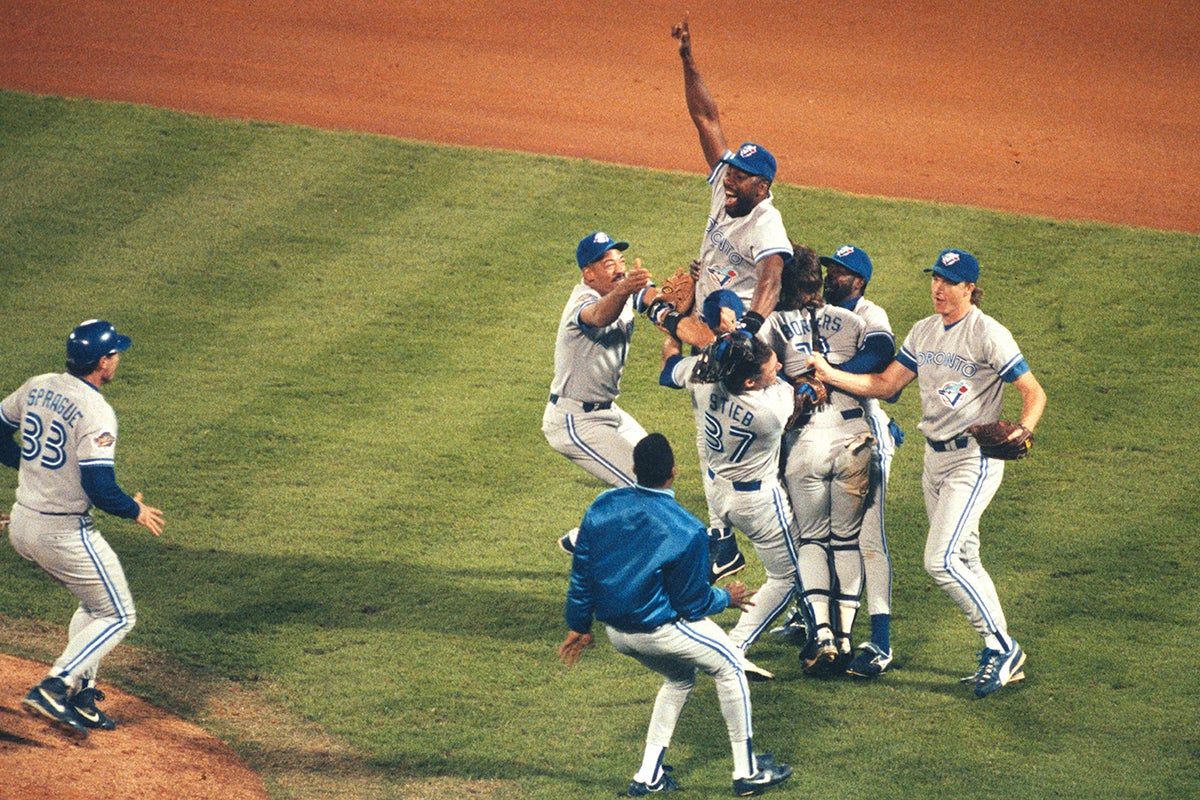
Playing first base, Carter recorded the game’s final out when Mike Timlin flipped him the ball that was bunted back to the mound by Otis Nixon.
The image of Carter wildly leaping into the air after the final out appeared in newspapers throughout North America.
Following the season, Carter finished third in the AL MVP voting – behind winner Dennis Eckersley and runner-up Kirby Puckett – and became a free agent when his contract expired.
“I feel great about finishing third (in 1992 AL MVP voting),” Carter told the Daily Oklahoman. “But I’m kind of disappointed, because the pitchers have a Cy Young Award. You’ve got guys who go out and play 162 games a year, and then they give the MVP to a relief pitcher. Don’t get me wrong: Dennis is the best relief pitcher in baseball. But it takes away the awards for the everyday players.”
Carter did not remain a free agent for long. On Dec. 7, he signed a three-year deal with a 1996 team-option to remain in Toronto – a contract worth a reported $19.5 million that convinced Carter not to sign with Kansas City, which pursued him with fervor.
“That’s probably the most difficult decision I’ve had to make in my life,” Carter told the AP. “I look at this as my last contract. After this, baseball is done for Joe Carter.”
In the end, Carter would play in the big leagues for six more seasons. But it was the first – 1993 – that everyone remembers.
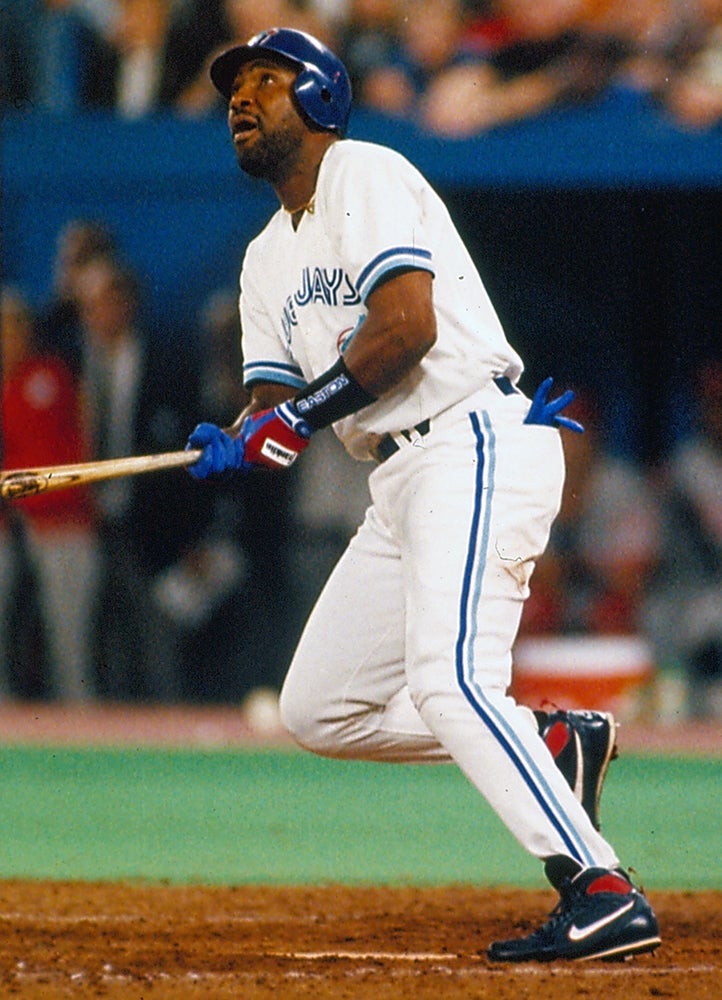
The same day Carter re-signed with Toronto, the Blue Jays also signed free agent Paul Molitor. The addition gave Toronto an almost unrivaled lineup and the Blue Jays steamrolled to another AL East title. Carter hit .254 with 33 home runs and 121 RBI before adding two more RBI in Toronto’s six-game victory over Chicago in the ALCS.
The World Series against the Phillies turned into an offensive slugfest, with Carter driving in four runs in the first three games. Toronto took a 3-games-to-1 lead through four games before Philadelphia’s Curt Schilling pitched a five-hit shutout to give the Phillies a 2-0 win in Game 5.
Game 6, however, featured another offensive explosion as Toronto took a 5-1 lead through five innings – Carter drove in the game’s second run with a first-inning sacrifice fly – before the Phillies scored five times in the seventh to go up 6-5. The score remained the same into the bottom of the ninth, with the Phillies calling on closer Mitch Williams to get the final three outs.
But Williams walked Rickey Henderson to start the ninth, and after Devon White flew out to center, Molitor singled to leave runners on first and second. With light-hitting Alfredo Griffin on deck, Carter worked the count to 2-0 before taking a strike and then swinging over a breaking ball. On the next pitch, Williams threw a pitch down-and-in that Carter quickly turned on.
“A swing and a belt…left field…way back…Blue Jays win! The Blue Jays are World Series champions!” Jays broadcaster Tom Cheek said in his memorable radio call. “Touch ’em all Joe! You’ll never hit a bigger home run in your life.”
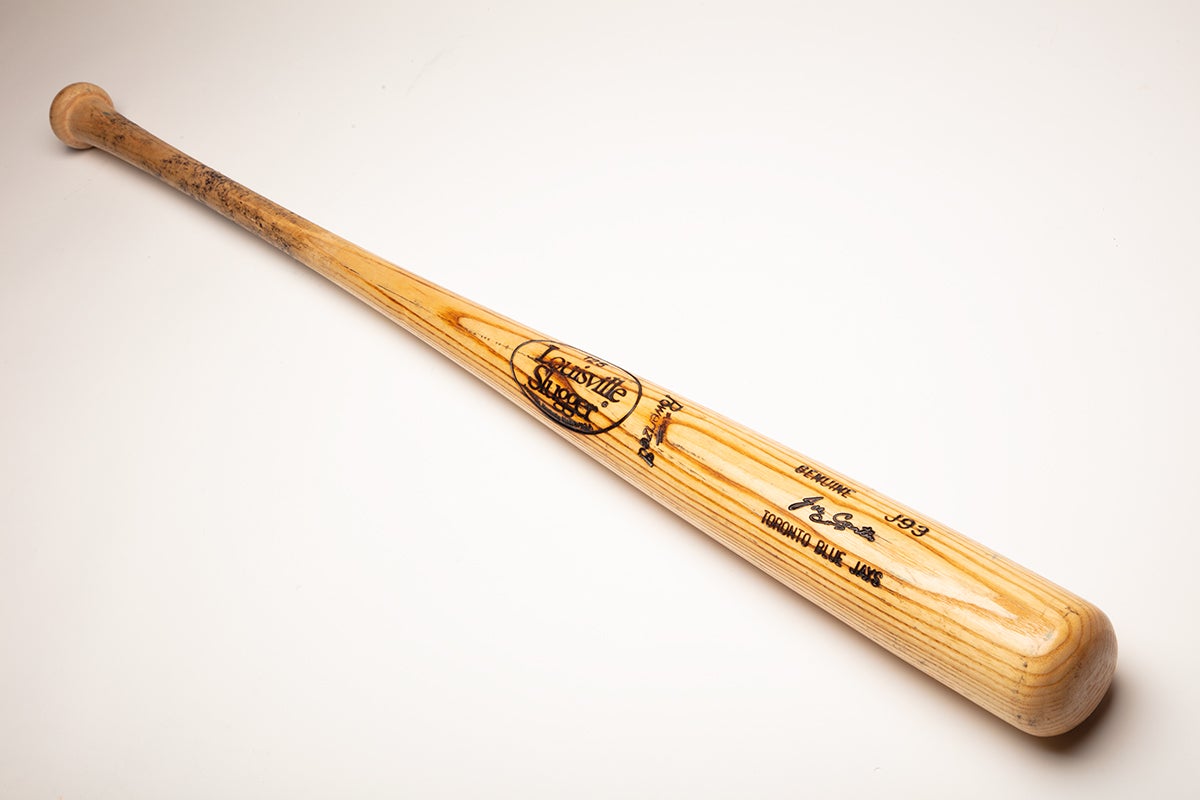
Truer words were never spoken, and Carter finished the World Series with eight RBI. And even though his heroics weren’t enough to earn World Series MVP honors – Molitor took home that honor – Carter’s standing as just the second player to homer to end a World Series will remain part of baseball lore forever.
“With Mitch out there, we knew something good was going to happen,” Carter told USA Today about Williams, who had struggled throughout the World Series but bravely answered question after question from the media following Game 6. “And it did.”
Carter and the Blue Jays were unable to achieve a three-peat in 1994 because the season ended prematurely due to a work stoppage. But Carter managed to drive in 103 runs in just 111 games – the eighth season in a nine-year stretch where he reached the century mark. In the one season he did not, Carter drove in 98 runs.
Carter showed signs of age in 1995 when he drove in just 76 runs. But the Blue Jays picked up his $6.5 million option for 1996 and he bounced back with 30 homers and 107 RBI in 157 games. Midway through the 1996 season, the Blue Jays broke a longstanding policy and extended Carter’s contract during the season, agreeing to a $6.5 million deal for 1997.
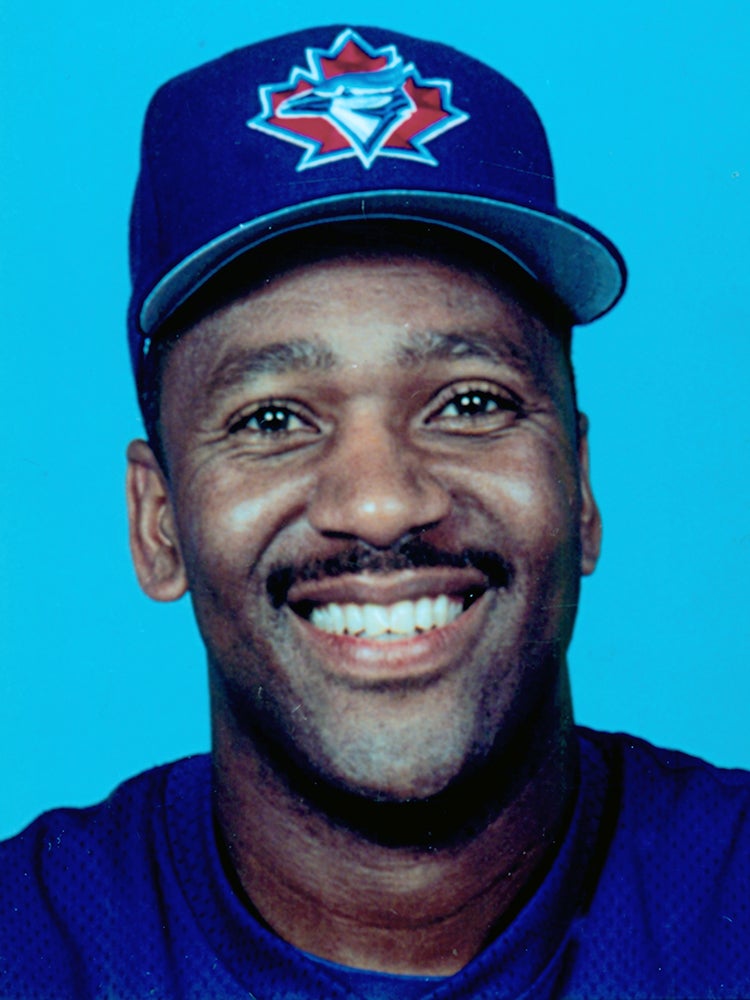
“Joe is a unique player,” Gord Ash, who had become Toronto’s general manager, told the Hamilton Spectator. “This was an opportunity to say we know where we’re going, we know where we’re headed, we’ve got a plan and we want (Carter) to be a part of that plan.”
Carter posted his 10th 100-RBI season in 1997 but hit just .234 with 21 home runs. This time, the Blue Jays allowed Carter to become a free agent. On Dec. 12, he signed a one-year deal with the Orioles worth $3.3 million.
“I wanted to play one more year,” Carter, who was second on the active home run list at that time with 378 long balls, told the Baltimore Sun. “I know there’s a lot more to life than baseball but I want to go out with a bang and this is a way to go out with a bang. I feel I can be productive. I know I can be. The fire is still burning.”
Carter hit 11 home runs and drove in 34 runs with Baltimore before being traded to the Giants on July 23 in exchange for a minor leaguer. He finished the season strongly, hitting seven home runs and driving in 29 runs in 41 games for San Francisco to help the Giants win 89 games and finished tied with the Cubs for the NL Wild Card. In the one-game playoff to determine which team advanced, Chicago won 5-3 – with Carter, who represented the tying run, fouling out to first base to end the game.
True to his preseason prediction, it would be his last game in the big leagues.
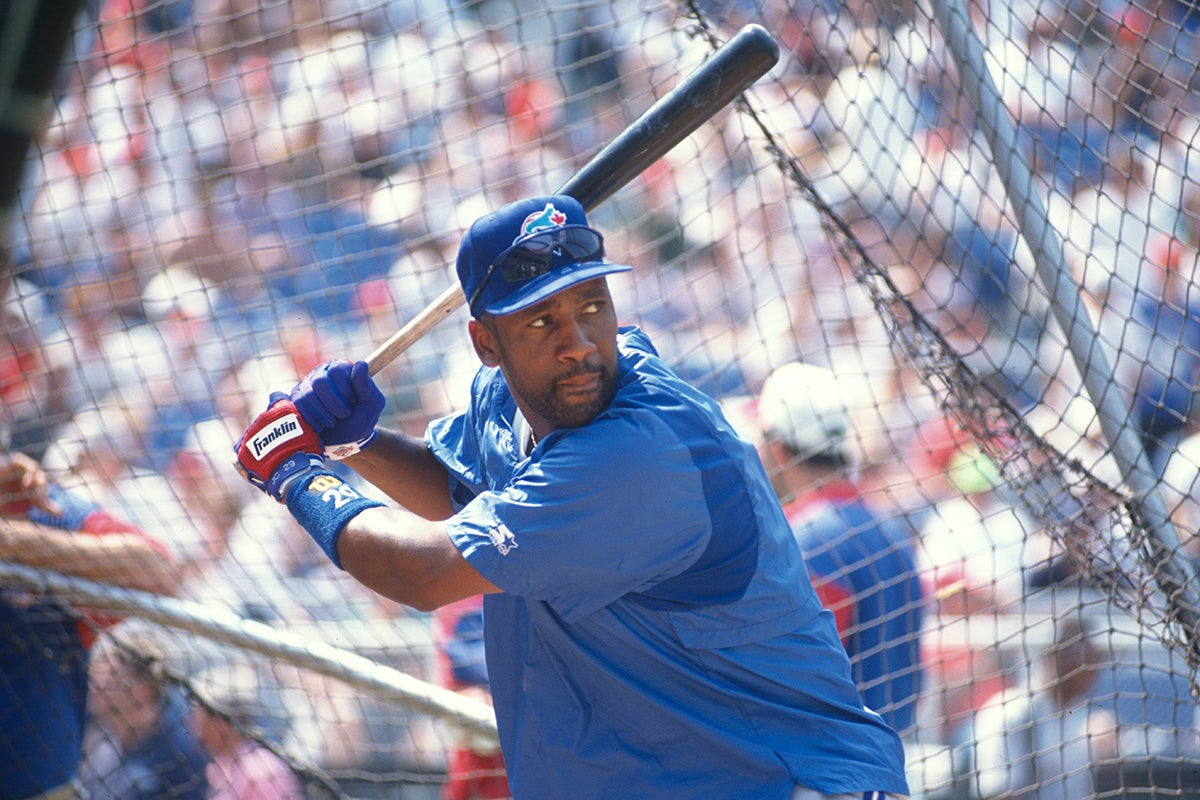
Carter finished his career with a .259 batting average, 396 home runs, 1,445 RBI and 231 steals. He is one of fewer than 20 players in history with at least 390 home runs, 1,400 RBI and 200 steals – a list that includes Hall of Famers like Hank Aaron, Jeff Bagwell, Andre Dawson, Reggie Jackson, Willie Mays and Dave Winfield.
None of those stars, however, had a moment exactly like Carter did in the World Series. Yet he somehow managed to stay in the shadows for much of his career.
“I’m not the kind of ballplayer who’s going to go out there and look for the headlines,” Carter told the Daily Oklahoman in 1992. “I just quietly do my job.
“If you’re in the game for the limelight, for the notoriety, the headlines, then you’re in the game for the wrong reasons. I’m in the game because I love it.”
Craig Muder is the director of communications for the National Baseball Hall of Fame and Museum
